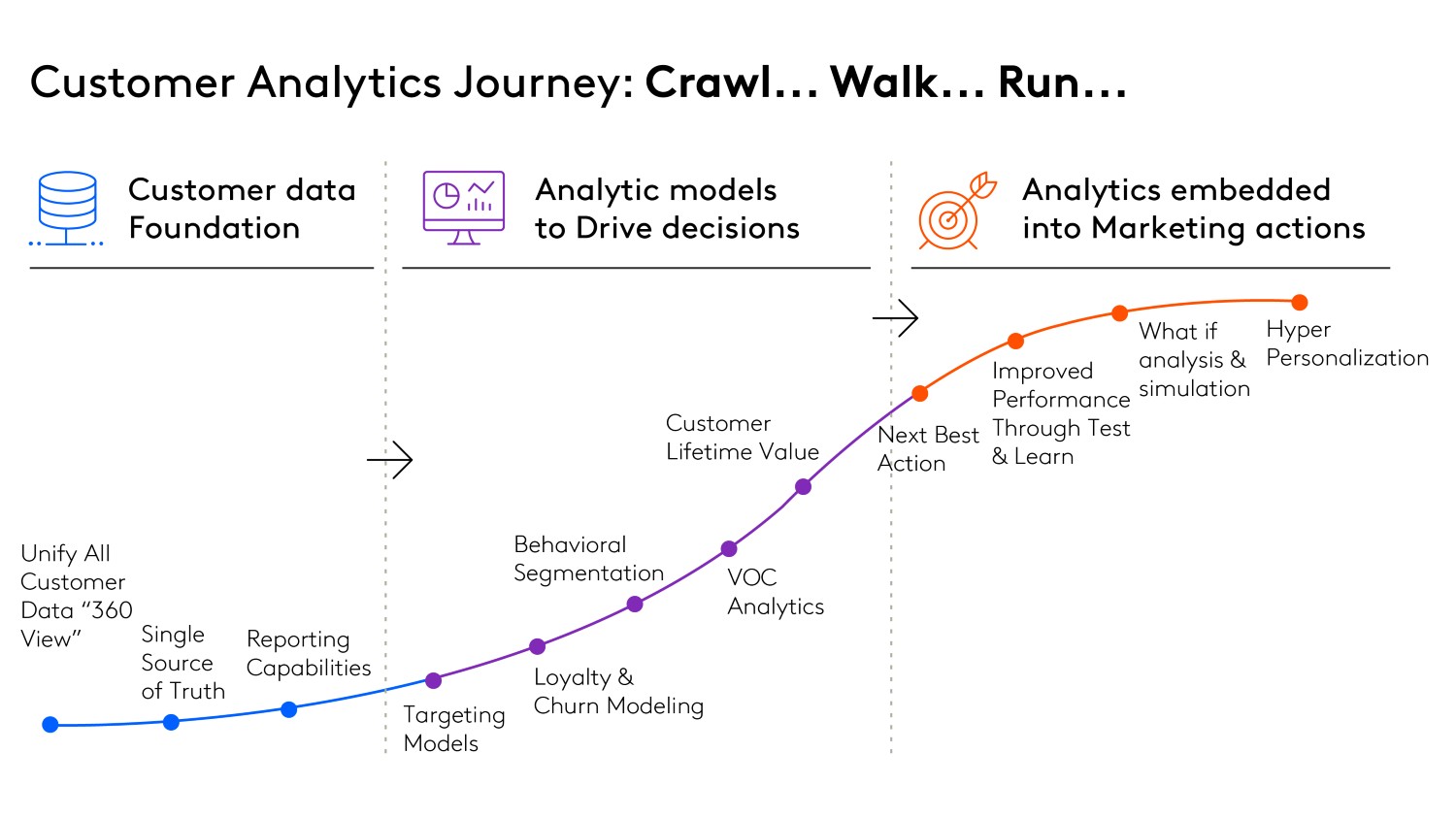The overarching goal of a customer analytics project is improved decision-making capabilities.
Unlike software development, where teams have embraced the “agile” model, the business of customer analytics tends to lack structure. Projects are often not very well defined. They tend to have an extended lifespan, and take you down paths that were never predicted. Customer analytics requires a disciplined mindset; it requires a process (a series of steps) rather than a product.
The challenge is well known. CIO Magazine reported that around one-third of all customer relationship management (CRM) projects fail. Reasons vary, but are generally based on the definition of success and goals – or the lack of definition.
Harvard Business Review surveyed executives about CRM projects and found an even more dire problem: they reported a failure rate of closer to 90%. Why? Companies were trying to address more objectives than are reasonable.
In order to be successful at analytics, businesses need guidance to assess where they are on a spectrum: the “analytics maturity curve” as Forrester calls it. (See the The Forrester Wave: Customer Analytics Service Providers 2021 report, in which Kantar was rated as a ‘Strong Performer’.)
A good analytics partner helps clients understand where they are, where they need to be, and how they can get to the best possible outcomes.

So how do you assess where you are in the journey, in order to make measurable progress?
There are four areas to consider.
1. Determine what types of data you have, how it is stored, and its accessibility, usability, and readiness.
Before you can come up with any kind of strategic roadmap, you simply need to know what you have, how and where it is stored, how easy it is to get at, and what the initial purpose/permissions are for that data. This may sound basic, but it is foundational to analytics. Considering the heightened concerns about privacy that demand appropriate storage and usage, this sort of assessment becomes even more important.
2. Assess the “How,” “When,” and “Why” to use the data.
Customer communication can be personalised or it can be generic. Do you plan to use customer data to enhance your messaging, and how? When and why? Will the marketing tactic be more successful if it is informed with specifics of demography and past purchasing? Is it more about driving awareness, and thus targeted more broadly? Always ask the “why”: Is there a pronounced benefit to addressing the customer personally? If not, there may be no need to pull in individual level transactional data and thus no privacy ramifications.
3. Develop processes to take advantage of the data.
Extracting all your data sources is not as simple as writing to an SDK (software development kit). Unfortunately, data may not be structured the way you need it to be, or must be cleansed in order to make it useful. Beyond that, you must determine how you are going to analyse it, whether it is properly categorised, and whether you have the ability to mine it. All of these essential assessments should be a part of any successful analytics journey.
4. Adopt the ‘it takes a village’ principle
More than other business disciplines, analytics thrives on collaboration. Many different departments may be capturing some sort of data. The CRM group, sales department, digital operations, media teams and web developers all work with varying types of (potentially powerful) data. When you develop the steps and processes to gather that data, make it coherent and cohesive. You will then be able to act on the data and truly unleash its power. Legacy processes and artificial walls between divisions will lead to competition, rather than collaboration.
In order to achieve the ‘customer centric’ view of marketing discussed over the last 20 years, all of the functions that can contribute meaningful data need to do so. There are no holdouts or carveouts in truly advanced customer analytics.
Kantar has been working in advanced analytics for some time and our consultants bring with them decades of experience in the discipline. We work across industries and are currently engaged with global companies in the retail, healthcare, hotel, and entertainment industries. All these businesses have transactional and customer relationship data. They also capture data from many other sources and store it in different places. All of this is useful for the analytics process. Kantar can help answer the questions: “What analytics?” and “For what purpose?”
What’s the end goal? Developing a cadence of meaningful insights from customer data, in order to attract and retain customers, increase customer loyalty and profitability, and inform product development and service. Organisations who abide by these four principles are well on their way to a successful analytics journey that generates measurable results.

